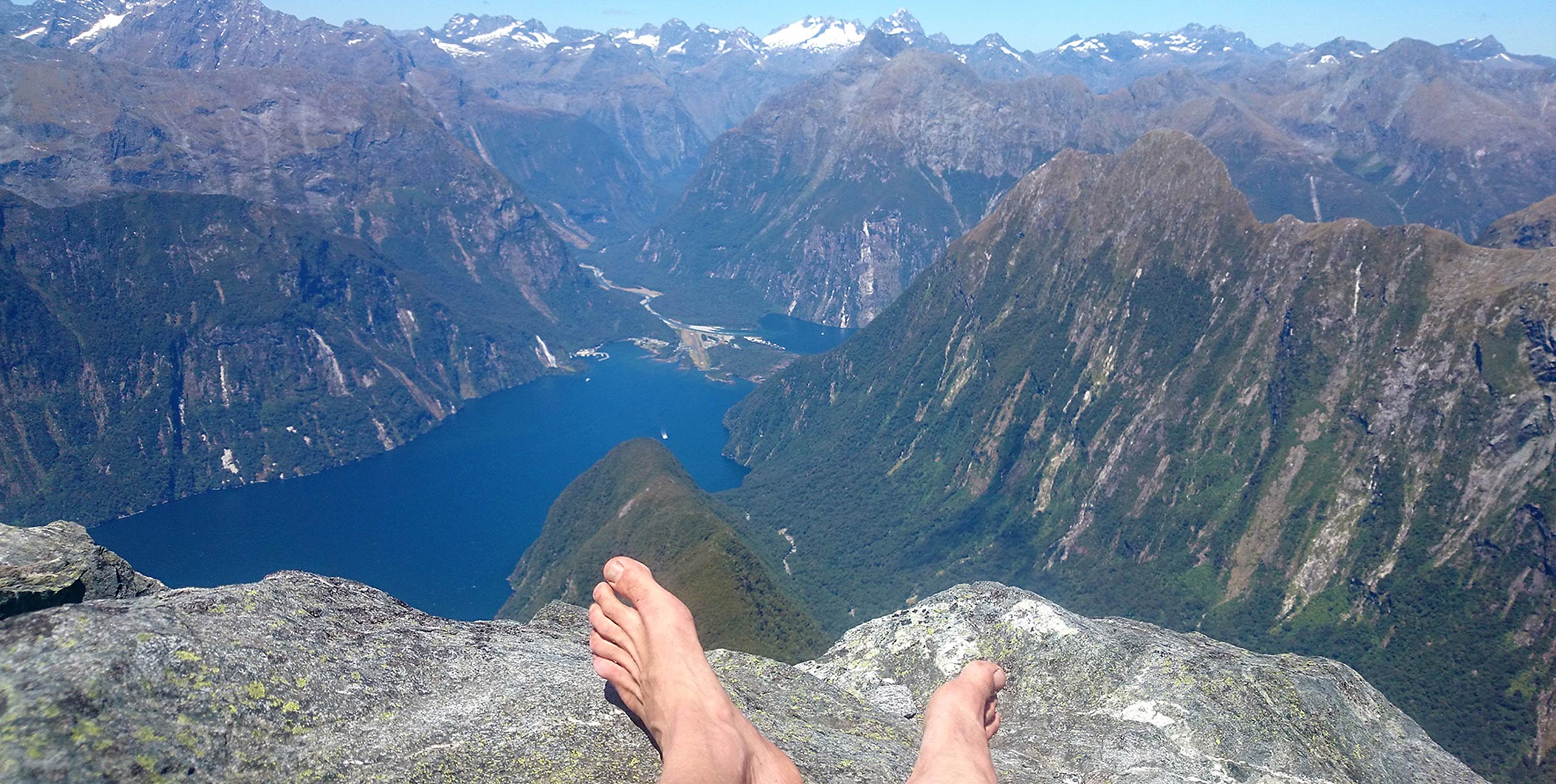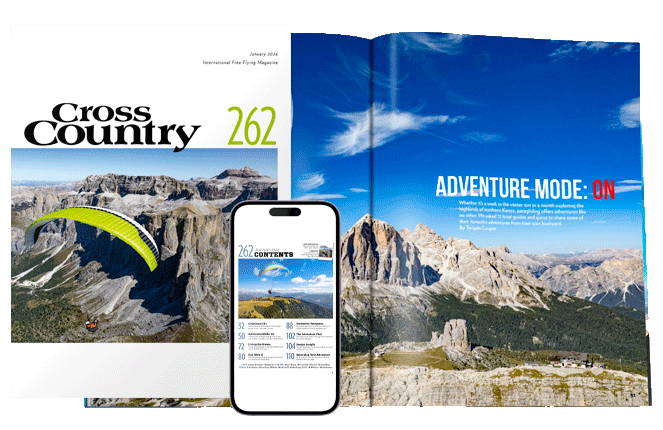There is a lot of ice in Antarctica and it will take a long time to melt. This is partly because the Southern Ocean lacks land masses to form gyres in ocean currents and circulate heat from warmer waters.
Two landmasses in particular extend their mountainous ramparts into the roaring forties: Patagonia and New Zealand. Both have been used in the Perlan high-altitude sailplane soaring project as they are good candidates for strong atmospheric waves that a modified glider can ride up into the stratosphere.
These are phenomena of a different scale, but on occasion the winds back off and we can also fly paragliders.
Both places with their maritime climates have higher precipitation than in the Alps, with more glaciation than belies their altitude or latitude. This means that the landforms have U-shaped valleys carved by ice. Rather than a narrow river carving a gorge, the ice accumulated year after year – as a result wide valleys and fjords were formed.
Milford Sound, NZ
Mitre Peak in Milford Sound is one of the...



